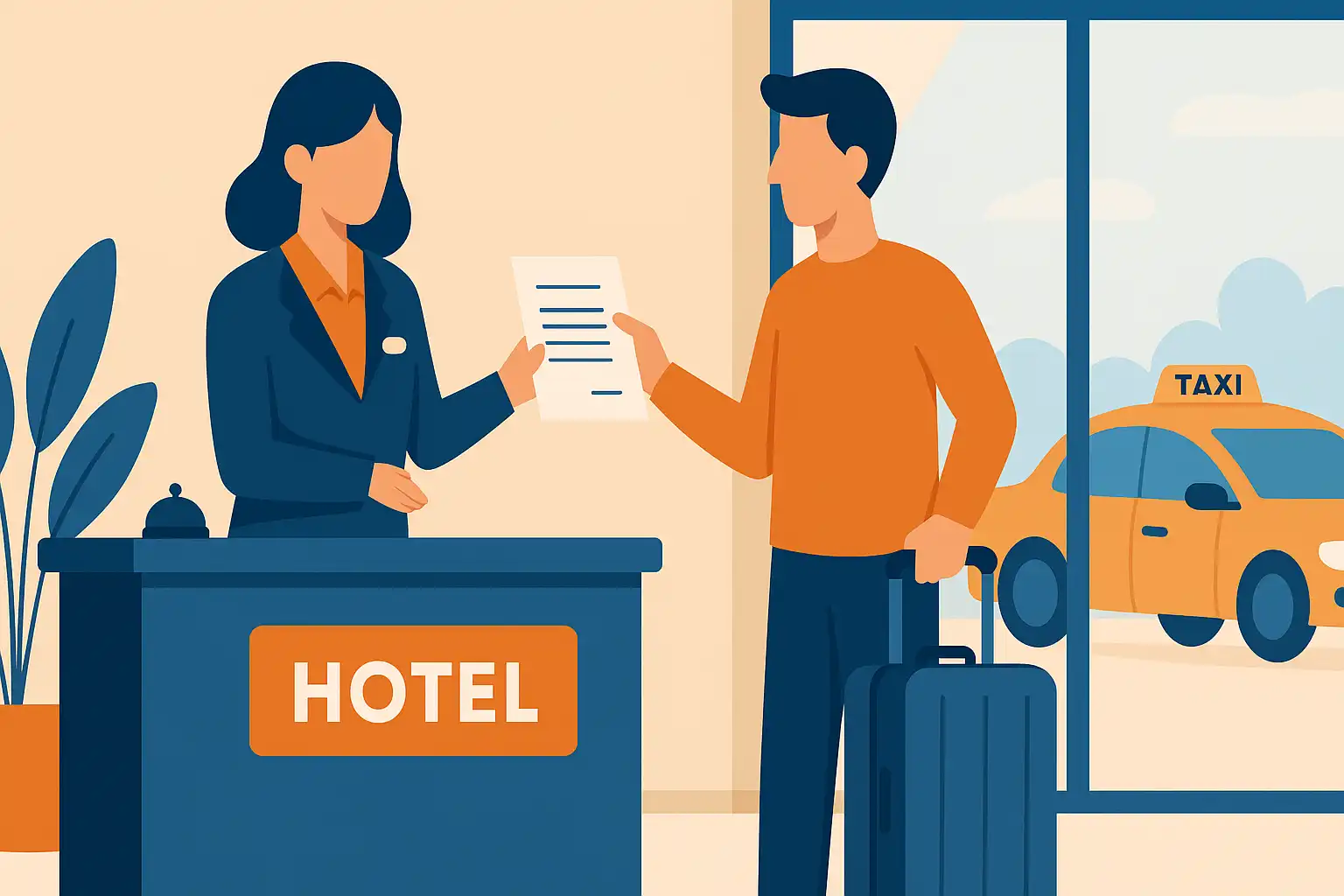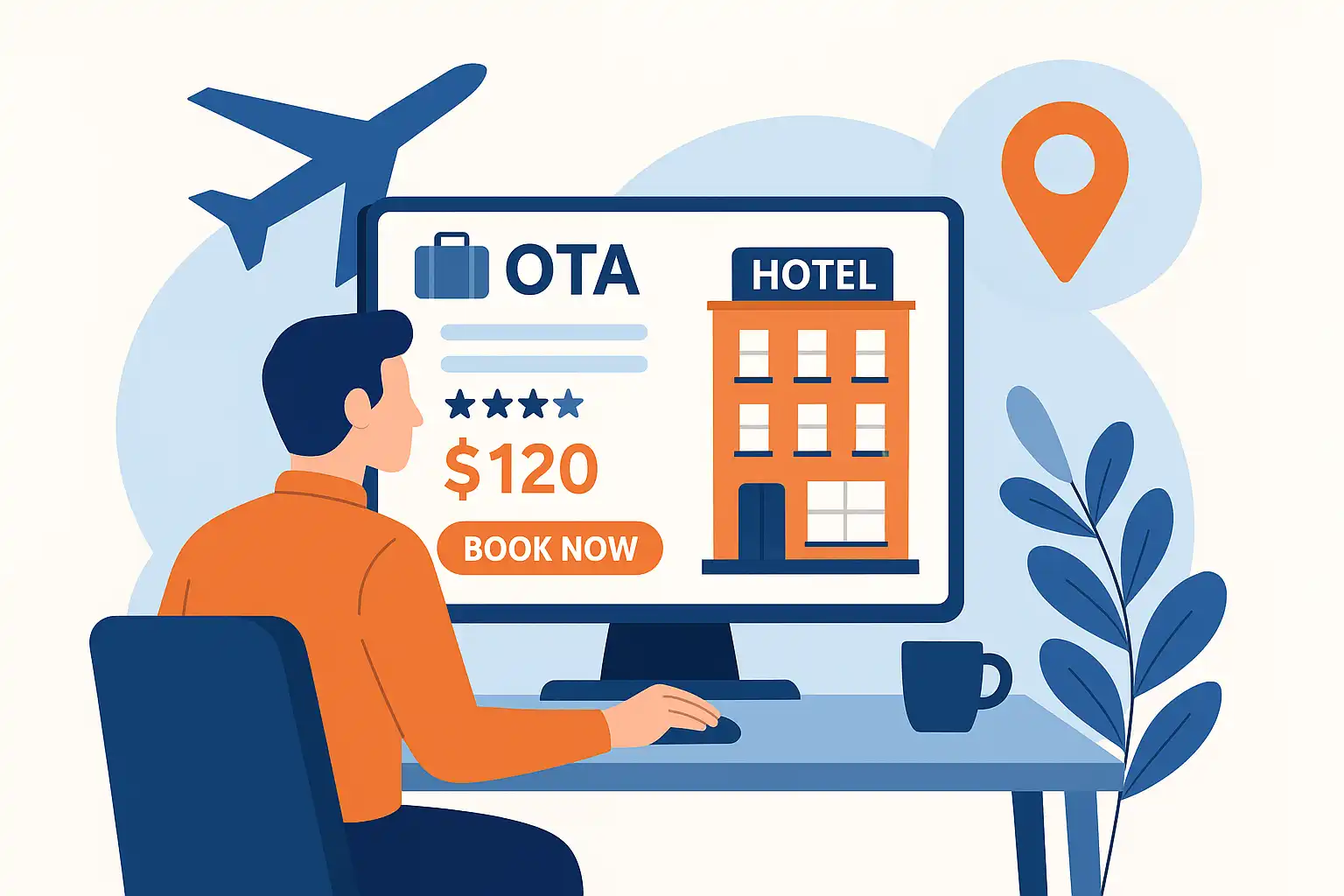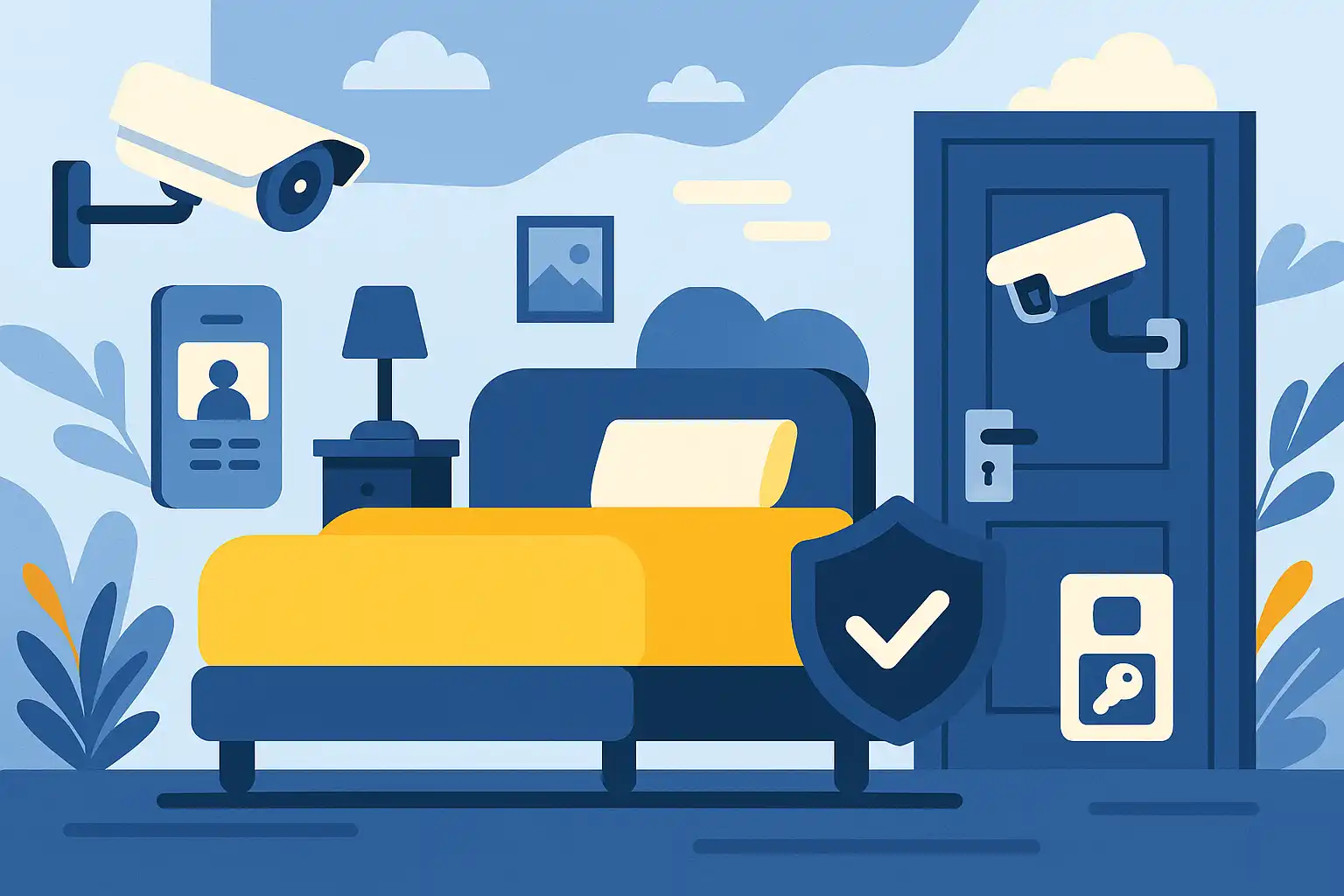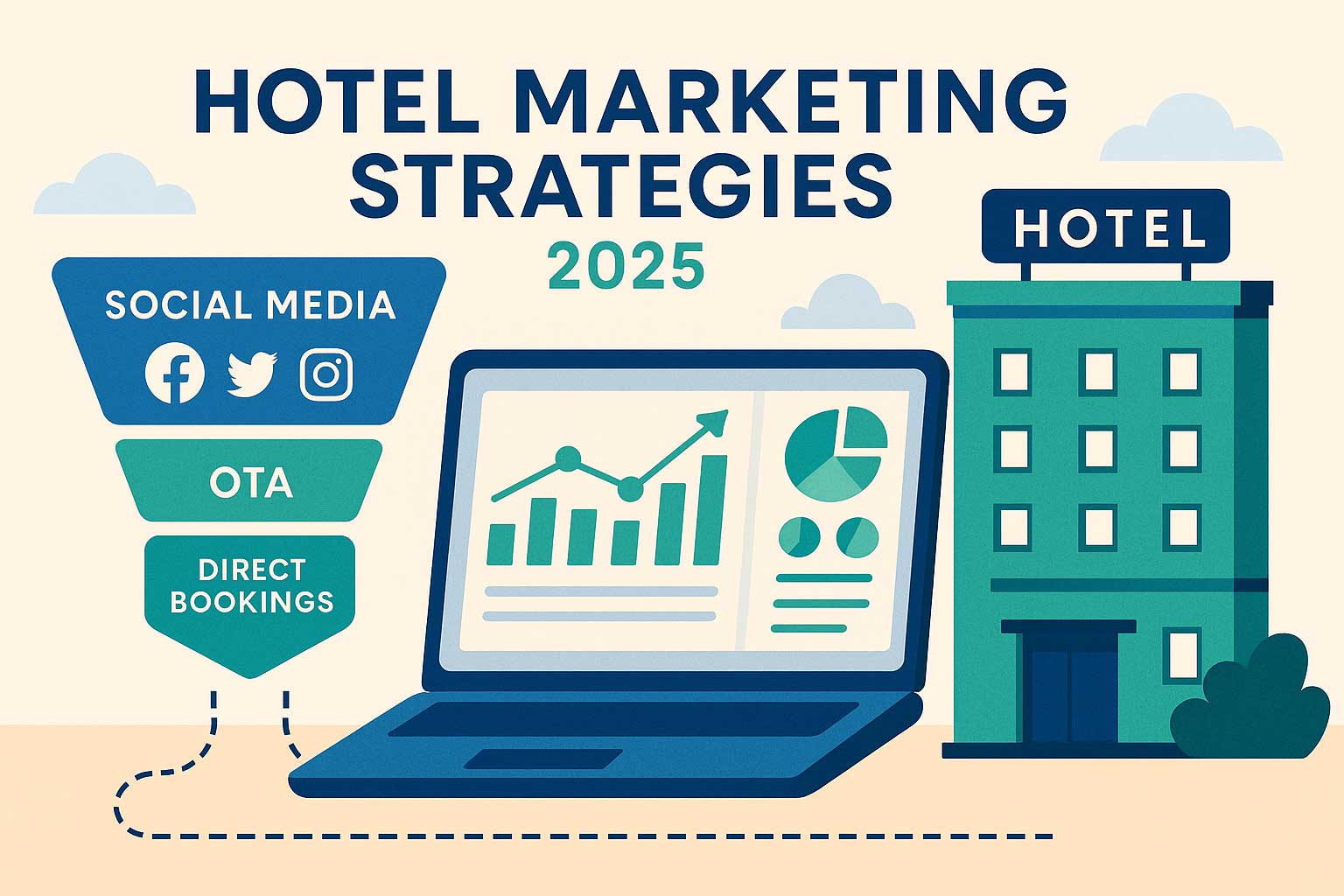ALOS Hacks: How to Encourage Longer Stays with Smart Packaging and Dynamic Discounts
Jul 30, 2025
 Mika Takahashi
Mika TakahashiPopular Categories
Hotel Technology & InnovationHotel Operations OptimizationDigital MarketingIndustry TrendsRevenue ManagementHospitality Industry
Popular Categories
Trending Post

Hotel Walk Letter Template: Professional Guest Communication

Online Travel Agents: What They Are and How They Work

Hotel Security Systems: Modern Protection Solutions

Hotel Advertising: Complete Guide to Boost Bookings and Revenue

25 Hotel Marketing Strategy Ideas for 2025: Complete Guide

AI Reservation Agent: Revolutionizing Hotel Booking and Guest Experience

PMS Communication: Streamlining Property Management Through Effective Guest Messaging
Table of contents
Increasing the average length of stay (ALOS) is one of the most efficient ways to boost hotel profitability and reduce operational strain. By analyzing booking patterns and guest behavior, hoteliers can design targeted packages and pricing strategies that encourage guests to stay longer—while minimizing turnover costs.
This article explores the importance of ALOS as a performance metric and offers practical strategies for optimizing it through smart packaging, dynamic discounting, data-driven decision-making, and integrated tech solutions.
Why Average Length of Stay (ALOS) Optimization Matters
Average Length of Stay (ALOS) is a key metric that reveals how many nights guests typically spend at your property. It provides valuable insight into booking trends, guest intent, and the distribution of short versus extended stays.
Average Length of Stay optimization helps hoteliers evaluate whether their pricing strategies, marketing efforts, and minimum stay policies align with guest demand. It’s also a powerful indicator of how well a property balances high-turnover business with longer-stay opportunities.
Key Benefits of ALOS Optimization:
- Reduced room turnover and labor costs
- Higher guest spend and stronger brand loyalty
- Better inventory forecasting and rate control
Whether you manage a city hotel focused on short-term bookings or a resort catering to week-long vacations, optimizing ALOS is essential to shaping a sustainable and data-driven revenue strategy.
Unsure what your ALOS is? Use our free ALOS calculator
Craft Smart Extended Stay Packages
To increase the average length of stay, hoteliers need to think beyond discounts—and start packaging value. Extended stay packages are one of the most effective tools for attracting longer bookings while preserving healthy margins.
Strategic Bundling: Give Guests a Reason to Stay Longer
Tiered stay bundles are a smart way to drive incremental nights. For example:
- Stay 4 nights, enjoy complimentary breakfasts
- Book 5+ nights, enjoy a free room upgrade
- Book 7 nights, receive free laundry service or a guided day trip
These packages resonate especially well with segments such as international traveling families and remote workers who seek value and the convenience of staying in one place when booking.
Packaging Tips: Add Value Without Driving Up Costs
Packages need to be appealing to potential guests while remaining profitable for your bottom line. To keep offers profitable:
- Match packages to booking patterns: Offer family bundles during school holidays or remote work perks midweek. Match the offer promotions to booking times, often 3-6 months ahead of the promotion's validity dates.
- Leverage existing amenities: Highlight features already included in your rate (e.g., view, beach access, work space, reliable Wi-Fi, gym access, parking) to create perceived value without increasing your base costs.
- Partner locally: Include third-party perks—like discounts at nearby restaurants or attractions—at minimal cost or via local partnerships.
Whether you're targeting weekenders or long-haul travelers, extended stay packages deliver a powerful combination: personalization that makes guests feel understood, added value that strengthens booking appeal, and urgency that drives quicker decisions. When supported by integrated tools like Prostay, these packages become both easy to manage and highly profitable.
Leverage Dynamic Hotel Discounts to Influence Guest Behavior
Used strategically, dynamic hotel discounts can significantly increase the average length of stay without sacrificing your rate integrity. The key is designing flexible incentives that align with your revenue goals while guiding guest behavior toward longer, more valuable bookings.
Smart Discount Structures That Work
Dynamic discounts are most effective when they reward commitment versus only perceived value. Common approaches include:
- Length-of-stay-based discounts: 10% off for 3+ nights, 20% for 7+ nights, escalating with duration
- Conditional offers: “Book 5 nights, get the 6th free” or “Stay Sunday through Thursday and save 15%”
These incentives work particularly well when timed around low-demand periods or tailored for specific segments like business travelers or digital nomads.
Managing Risk: Protecting Your Rate Strategy
Discounts can be powerful, but only when controlled carefully:
- Avoid rate cannibalization by setting minimum thresholds (e.g., don’t allow long-stay discounts to undercut your base weekend rate).
- Limit availability based on date range, distribution channel, or guest type. For instance, offer long-stay discounts only through direct bookings or midweek stays.
- Maintain profitability by ensuring discounts are offset with lower turnover costs or increased ancillary revenue.
By using dynamic hotel discounts as a lever rather than a giveaway, you can nudge guests toward longer stays while keeping your revenue strategy intact.
Use Data Insights to Fine-Tune Long-Stay Strategies
To optimize average length of stay effectively, hoteliers need more than gut instinct—they need granular data. Tracking ALOS trends by market segment, booking season, and source helps pinpoint where opportunities exist to extend stays and improve profitability.
Prostay’s built-in dashboards allow properties to monitor performance by package type, promotion, and guest behavior, helping teams quickly identify what’s working and what needs attention. With A/B testing capabilities, you can compare different stay-length offers or discount thresholds to see which combination drives the most conversions and revenue.
Tailor ALOS Tactics to Your Property Type
Long-stay strategy is not one-size-fits-all. Prostay enables property-specific customization, so you can adjust based on operational context:
- Urban hotels facing high turnover from business travel can analyze weekday vs. weekend patterns and introduce multi-night business bundles to fill midweek occupancy gaps.
- Resorts can use seasonal data to craft early-booking extended stay packages that smooth out peaks and maintain rate integrity, including family-friendly activity packages.
- Vacation rentals can track guest type and booking window to fine-tune minimum night rules and promote remote work-friendly weeklong stays for digital nomads.
ALOS optimization isn’t a set-it-and-forget-it promotion. With the right tools, it becomes a dynamic, data-led strategy.
Align Your Tech Stack to Support ALOS
Even the most creative long-stay strategies can fall flat without the right infrastructure behind them. When your PMS, booking engine, and channel manager aren’t aligned, you risk inconsistencies across platforms—leading to outdated rates, mismatched promotions, or missing inventory. These disconnects don’t just hurt conversions; they undermine guest trust and revenue integrity.
A long-stay discount that appears on your website but not on OTAs, or an extended stay package missing key blackout dates, can confuse potential guests and result in lost bookings or eroded margins. That’s why system-wide consistency is foundational to sustainable ALOS optimization.
Centralized Control for Smarter Execution
With an integrated platform, properties can build and deploy long-stay packages and discount logic from a single interface, ensuring alignment across all channels. Key benefits include:
- Unified rate and package management
- Real-time syncing of availability, blackout dates, and pricing rules
- Consistent enforcement of promotional logic across room types and guest segments
This centralized control allows hoteliers to respond quickly to market shifts, fine-tune stay incentives, and maintain rate integrity without manual workarounds.
For example, Prostay brings your PMS, booking engine, and channel manager together in one platform, making it easy to launch, manage, and measure long-stay strategies at scale.
How Software Can Make ALOS Optimization Easy
Executing a successful long-stay strategy requires more than just ideas—it requires the right tools. Prostay’s all-in-one hotel management platform gives properties the flexibility and control to implement extended stay packages, dynamic discounts, and cross-channel consistency with ease.
With Prostay, you can:
- Customize tiered packages based on minimum stay length and guest profile
- Add upsell options at checkout, such as breakfast, late check-out, or workspace access
- Automate long-stay discount logic by setting rules based on length of stay, rate plan, or booking window
- Maintain promotional consistency across room types, channels, and guest segments through integrated controls
- Monitor and refine performance with centralized reporting tools that track package success by campaign, season, and channel
This seamless integration means fewer manual updates, fewer errors, and more opportunities to convert long-stay guests, whether they book direct or via OTAs.
When powered by an integrated platform like Prostay, these strategies become easy to execute and scale. Start by identifying growth opportunities with our ALOS calculator or book a free demo today.
Conclusion
Optimizing your average length of stay isn’t just about extending guest bookings—it’s about maximizing revenue, streamlining operations, and strengthening direct guest relationships. By leveraging smart, tiered extended stay packages, well-structured dynamic hotel discounts, and real-time data insights, you can transform one-off bookings into sustained loyalty and higher per-guest value.
The foundation of success lies in clean, synchronized technology. When your PMS, booking engine, and channel manager are tightly aligned—as they are with Prostay—you ensure seamless execution across every channel: from personalized offers to accurate availability. And with performance dashboards and A/B testing baked into your workflow, you continuously refine your strategy to deliver the strongest ROI.
Ready to take your long-stay strategy to the next level? Use our ALOS calculator to benchmark performance and explore how extended stay packages and strategic discounts can elevate your booking mix.
